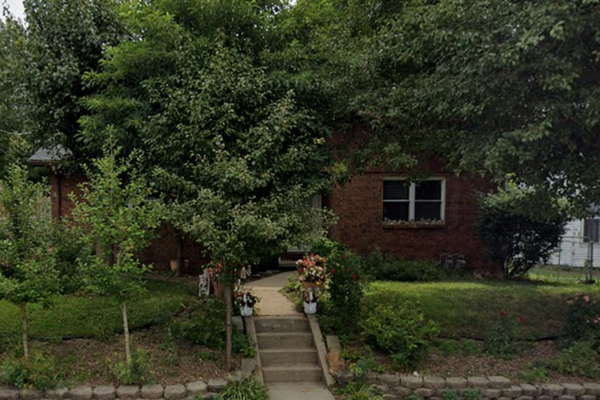
A powerful earthquake has struck a remote region of Tibet, killing at least 126 people and wounding more than 100 others, with tremors felt in Nepal, Bhutan and parts of northern India.
Videos aired by China’s state broadcaster CCTV showed houses destroyed with the official Xinhua News Agency saying more than 1,000 houses were damaged. The epicentre of the quake was Shigatse, one of the holiest cities of Tibet.
Here is what we know so far:
What was the magnitude of the Tibet earthquake?
The United States Geological Survey said the earthquake measured 7.1 on the Richter scale, while the China Earthquake Networks Center (CENC) recorded a magnitude of 6.8.
The quake, just after 9:05am local time (01:05 GMT), shook the region of western China at a depth of about 10km (6 miles).
Where was the epicentre of the earthquake?
The epicentre of the quake was the Shigatse high-altitude county of Dingri, located on the Chinese side of Mount Everest and home to about 62,000 people.
Tuesday’s quake was the most powerful recorded within a 200km (124-mile) radius in the last five years, the CENC added.
Shigatse is the seat of the Panchen Lama, a significant figure in Tibetan Buddhism, whose spiritual authority is second only to the Dalai Lama.
Dingri is currently experiencing temperatures of about minus 8 degrees Celsius (17.6 degrees Fahrenheit). The China Meteorological Administration forecast that the mercury will drop to minus 18 degrees Celsius by Tuesday evening.
The remote Shigatse is far from China’s main cities. This, combined with the extreme cold, has hindered rescue efforts, according to Al Jazeera’s Katrina Yu, reporting from Beijing.
What do we know about the victims?
At least 126 people have been killed and another 188 other people are injured as of 7:00pm (11:00 GMT) on Tuesday, according to Xinhua.
A man in Kathmandu was injured after jumping off the top of a house following strong tremors, Nepal Police spokesman Bishwa Adhikari told Reuters.
No other casualties or damages have been reported so far from Nepal, India and Bhutan.
Were houses damaged in the quake?
The earthquake caused infrastructural damage, with images showing collapsed homes and other buildings reduced to rubble.
The Xinhua news agency reported that more than 1,000 houses have been damaged to varying degrees.
“Dingri county and its surrounding areas experienced very strong tremors, and many buildings near the epicentre have collapsed,” according to the state broadcaster CCTV.
In the town of Lhatse, videos geolocated by AFP showed debris scattered in front of streetside eateries.

Where were the tremors of the Tibet earthquake felt?
Kathmandu, the Nepalese capital, was rattled by the tremor and aftershocks, forcing some residents to rush from their homes. Kathmandu is about 230km (140 miles) south of Shigatse.
Tremors were also felt in India’s northern state of Bihar which borders Nepal. They were also felt in Bhutan’s capital Thimphu.
According to Nepal’s National Disaster Risk Reduction and Management Authority (NDRRMA), shocks were experienced in seven hill districts which border Tibet.

How has the government responded?
The search for survivors of Tuesday’s magnitude 7.1 earthquake has ended. Rescue and recovery personnel are now turning their attention to helping the 46,000 people displaced by the quake.
The Chinese government had initially deployed some 1,500 rescue workers, including military personnel, to the area. Al Jazeera’s Yu on Tuesday said that there were pictures of those affected by the earthquake being treated on the streets.
Xinhua reported that some 22,000 items of disaster relief aid have been dispatched to the affected areas, which include cotton tents, quilts and items for high-altitude areas.
Chinese President Xi Jinping emphasised “the all-out search and rescue efforts, minimising casualties to the greatest extent possible, properly resettling affected residents, and ensuring their safety and warmth through the winter”, CCTV added.
Xinhua said that “local authorities are reaching out to various townships in the county to assess the impact of the quake”.
Have the Himalayas recently experienced earthquakes?
The Tibetan Plateau is prone to earthquakes because of colliding tectonic plates.
Tibet and Nepal lie on a major geological fault line where the Indian tectonic plate pushes up into the Eurasian plate, forming the Himalayas, and earthquakes are a regular occurrence. The region is seismically active, causing tectonic uplifts that can grow strong enough to change the heights of the Himalayas’ peaks.
“Education about earthquakes and earthquake-resilient buildings combined with funding for retrofits and resilient structures can help protect people and buildings when strong earthquakes occur,” Marianne Karplus, a seismologist and geophysicist, told Al Jazeera.
“The earth system is very complex, and we cannot predict earthquakes. However, we can conduct scientific studies to better understand what causes earthquakes in Tibet and to better understand the shaking and impacts resulting from earthquakes,” Karplus, who is a professor of geological sciences at the University of Texas at El Paso, said.
There have been 29 earthquakes of magnitude three or above in the past five years within 200km (124 miles) of the Shigatse quake epicentre, according to CCTV. However, authorities say that Tuesday’s quake has been “more powerful” than the other earthquakes in the past five years, Al Jazeera’s Yu reported.
In 2015, nearly 9,000 people died and more than 22,000 were injured when a magnitude 7.8 quake struck Nepal, destroying more than half a million homes.
On May 21, 2021, an earthquake of magnitude 7.3 rattled China’s southern Qinghai province.
Tuesday’s quake is among the worst earthquakes to hit the Himalayan region in 100 years.







